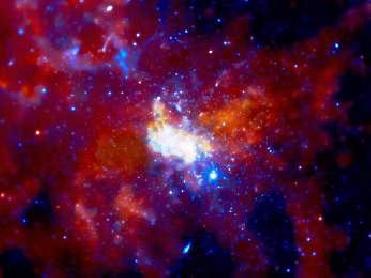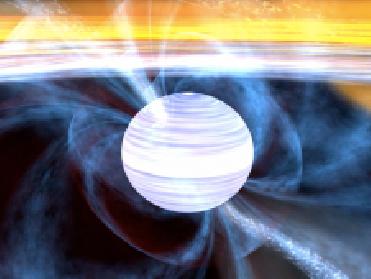
This Chandra image of Sgr A* and surrounding region is based on data from a series of observations lasting about one million seconds, or almost two weeks. Image credit: NASA
WASHINGTON (BNS): A supermassive black hole, present at the heart of Milky Way galaxy, has been known to astronomers as a �poor eater� of its prey.
Scientists have now discovered that the black hole � Sagittarius A* or Sgr A* for short �indeed consumes much less �fuel� than previously thought.
The �fuel� for this black hole comes from powerful winds blown off by dozens of massive young stars.
However, the stars are located at a relatively large distance from Sgr A* where the gravity of the black hole is weak, thereby making it difficult to capture and swallow the high-velocity winds coming from the stars.
Scientists had previously calculated that Sgr A* would be gulping only about one percent of the fuel carried in the winds.
However, it now appears that Sgr A* eats only about one percent of that one percent.
Using data from NASA�s Chandra X-ray Observatory, the astronomers have put forward a new theoretical model to explain the phenomena.
As per the model, there are two regions around the black hole where flow of energy occurs � an inner region that is close to the event horizon (the boundary beyond which even light cannot escape), and an outer region that includes the black hole's fuel source � the young stars � extending up to a million times farther out.
Collisions between particles in the hot inner region transfer energy to particles in the cooler outer region. This, in turn, provides additional outward pressure that makes nearly all of the gas in the outer region flow away from the black hole, NASA said.
The model appears to explain well the extended shape of hot gas detected around Sgr A* in X-rays as well as features seen in other wavelengths.
The image taken by Chandra also provides the researchers a view of the supernova remnant, Sgr A East, near Sgr A* and the lobes of hot gas extending for a dozen light years on each side of the black hole. These lobes provide evidence for powerful eruptions occurring several times over the last ten thousand years, NASA said.
 Previous Article
Previous Article Next Article
Next Article













The Indian Air Force, in its flight trials evaluation report submitted before the Defence Ministry l..
view articleAn insight into the Medium Multi-Role Combat Aircraft competition...
view articleSky enthusiasts can now spot the International Space Station (ISS) commanded by Indian-American astr..
view article